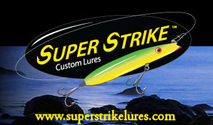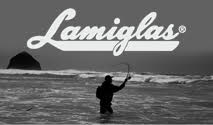I been told that the “proper” way to set up my drag was at third of my line breaking strength…and this was cool when we all used 17 pound mono. I would not advise you to use 20 pounds of drag with 60 pound braid many of you use today.
Which got me thinking. We talk about hooks, plugs and colors. Clips, fluorocarbon, perlon, flip flops on rocks and God knows what else. But we rarely talk drags…because they are suppose to be set at the third of line strength (which we already established is a no-go with today’s braided lines).
I got to be honest and say that I don’t play with my drag much. Only when I feel that I am in trouble. If the fish wraps me around the rock, if the fish is taking me into the bridge abutments…that kind of stuff
But then I listed to John Skinner and what he is saying is making a lot of sense. Why would you fight the fish at same drag strength when you hook it and when you about to land it. It doesn’t make any sense. If we claim that we do so many adjustments during a retrieve because of changing water conditions, depending where our plug is located in the rip, or white water, why don’t we do same with a drag. After all, most of big fish are lost right in the wash, when strong undertow pulls on the fish while you drag is as tight as it was when you hooked it. If you loosened up the drag, you would have never lost that fish. I know, because I am guilty of the same thing.
How many of you do adjust a drag during a fight? I know I will be more aware of this in the future than I have been in the past
Here is an old video we did of John speaking at SJ Winter Seminar Series.
[youtube]http://www.youtube.com/watch?v=Vs2etM4Ls9Q[/youtube]
And if you haven’t read John Skinner new book, I suggest you pick up a copy . The man is nothing short of brilliant
[issuu width=420 height=162 shareMenuEnabled=false showHtmlLink=false proSidebarEnabled=true backgroundColor=%23222222 documentId=120707201511-7f8cda4eee37461cb729655825046239 name=issue14 username=surfcasters_journal tag=fishing unit=px v=2]













Thanks for the info. Setting the drag is a hard thing cause there is no gauge. I bought a baitrunner for that reason alone.
↓I’ve run into that while casting for smaller Bluefish and Spanish Mackerel. A lightened drag can lengthen the fight and it makes you look weak while you’re trying to reel in that fish, but if you can get past your pride you’ll put more fish on the beach.
↓I’ve also recently lightened the drag on my circle hook bait rods while fishing for Whiting with good results. The larger Whiting make a run at the breakers that can pull drag, but the #4 Mutu Light doesn’t pop out.
Hi Zeno and the gang.. I just want to say thank you for successfully bringing surf fishing information to the forefront. All your videos are great and the interviews and stories about the older casters I think are of great importance to keep our history alive and well. The photos are truly fantastic in the magazine and there is always something for everyone from beginner to midnight surf rat. Tight lines boys!
↓I set my flip flops to at least 2/3 slipage in case that big rock comes along and tries to shake me off.
1/3 is a guideline vs actual rule, which covers general fishing and has served many well for a very long time why fix whats not broken.
↓I set and forget it, with the exception of when I hook into a big one, then it may require cranking it down. Very rarely loosen it for the cookie cutter fish 31″ to 35″.I feel releasing the fish with as much stress as possible gives the fish a higher chance of surviving and living to fight another day
↓I start pretty tight and only loosen if the fish is really pulling hard and then also as the fish gets closer to being landed. Sometimes I tighten when the fish gets close too, it just depends on how they are fighting. Drag strength is one of the reasons I invested in a VS – I went through 5 penn reels in a season due to stripping the gears from a tight drag setting.
I definitely subscribe to Johns theory on drag. The worst sound ever is a drag slip Ina hookset or even while I’m laying into a cast – really hate that.
↓i’ve always adjusted as needed, and have
↓been admonished by older, more experienced fishermen for doing that. I think has anded me more fish when I loosen the drag during landings. it
was great validation for me to hear JS doing the same, thanks!
John Skinner does a great job every time I see one of his videos or books thanks SJ for putting up the video
↓I agree with John. I fish with my drag almost locked all the way. How can you set the hook when the force you are using to set the hook is slipping away during the hookset.
↓I have Johns book, Fishing the Bucktail, and have read it twice. Great book for anyone who wants to learn how to bucktail and I’m catching more fish on them now than I ever did. And lets not foget Zeno and the SJ crew for this great blog.
Drag settings are probably the most neglected item guys overlook while maintaining fishing equipment. Reels are built and made to handle specific lines and when you exceed this rating (drag) you are setting up your fishing trip for failure. I have heard SO many guys complain about reels that are junk and did not hold up after a couple of trips, 1 year or only a few fish. So many guys are loading up reels that were made to handle 8-10-12-15 pound line with the newer braids and newer polimar lines (rated 20-30-50-80lb) and are wondering why they are blowing apart, breaking handle and parts are snapping off. Also a lot of guys are complaining about rod failures, tips breaking and casting issues. These could all be results of EXCEEDING the rating of equipment.
Drags for reels were designed and built to handle the ratings that are with the spool or on the manufacturers information sheet. Exceeding those ratings on equipment could cause catastrophic failure and possibly cause personal injury to you or others fishing next to you.
Drags should be maintained like you would lures, leaders and line. If it is not smooth in its operation take it apart, clean it up or get it serviced. This could keep you safe, and maybe keep you from loosing a fish of a lifetime.
You can get almost any reals drag information right from the internet and spend 5 minutes looking over the print and take them apart,clean them up and put it back together for many long years of service.
BJK
↓I tried it MR skinners way starting out high than backing down but this spring i lost the best fish of my life and before i had time to lossen up the drag he had my 4x gamis straight as an arrow on 30lb Ppro
↓I’d like to have this discussion include the physics of how the drag setting increases with the pull of a big fish, i.e., the more line stripped from the spool increases the amount of drag. I was taught, by an old time striperman, to keep that drag loose, like 1/4 to 1/3 breaking strength on mono and letting that fish run until you can turn it and tighten the drag a little more, say to 1/2 (I think you just have to get the feel of that drag setting by trial and error). In the Canal, I find on braid, that a 1/3 to 1/2 strength setting works pretty well for braid up to 40 lbs. Upwards of that I thinkj you’d have a lot of pulled hooks after the initial hook set…
↓I play with my drag. Set it heavy for a solid hook set and back off when needed. I pretty much have to back the drag off of a good fish. I fear my knots, a knick in the line, but mainly because that sudden burst has the potential to cause me to lose my footing. having to take a step is no big deal on the beach or on a sand bar, but could be an issue on a jetty and a PITA when perched on a rock.
It was much easier to adjust the older ZB drag knobs than the newer ones.
↓Since I fish mostly surface lures I would never think of setting the drag at the high end. Fishing surface lures you will lose many fish with the initial drag setting high.
↓I set my drag once (10%-30%) and then check to make sure that I can get a hook set that will penetrate into an old piece of ballistic nylon that I have at my shop. I never adjust the drag, I’ve had minimal slippage from casting (this is the only time I will tighten a drag after setting; and the increase is minimal) and I have never lost a fish in the wash; rocks, sand or boat. I also sharpen my hooks, even after catching and releasing a fish, I will give the points a swipe or two. I do this even when I’m wet suiting and rock hopping. There is nothing more critical to achieving a solid hook set than sharp point on your hook. If you want to waste hook setting energy, use hooks that have landed a fish or two.
↓One of the reasons I stick with my Van Staal reels is because the drag system on those reels always permits me to fish the way I described above.
Zeno,
↓I’d seen this video a few weeks back and called Al right away, psyched that JS talked about backing off the drag when the fish is in close. Allowing that extra give eliminates bent hooks, hardware or line failure, the hook pulling out of an enlarged hole etc. It’s more a matter of keeping your cool and being patient in those last moments.
I do fish with a tight drag, but will adjust it according to what I’m throwing. 4x VMC’s and up, hammered drag. 3/4-1oz bucktail, I lighten up because big fish can demolish most hooks. I often fish swing hooks in big fish situations, cut the hook off out of the package and put a #8 on. This has served me very well. When I know there are big fish around but theyre finicky, I’ll go to the cordell pencil but have to remember to loosen my drag significantly without there being a through wire. One more example is the older style 6 and even 7 inch Tsunami Shad. I lighten up slightly because those wire hooks aren’t the best.
I fish a 30# braid most of the time. I set my drag between 8-10#. I never touch the drag knob, if the fish is running hard I might just palm the spool to stop him Or just to turn him around. I think that at the end of a cast my 8-10# setting maybe more like 10-12# because I am deeper in to the spool. I would be too worried about having to loose or too tight of a drag if I was playing with it on every fish.
↓